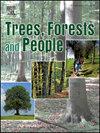利用地理信息系统进行多标准决策分析,评估埃塞俄比亚甘贝拉地区太阳能生物质压块厂的适宜性
IF 2.7
Q1 FORESTRY
引用次数: 0
摘要
生物质压块是替代烹饪能源、改善生计和促进可持续发展的一条大有可为的途径。这项研究强调了甘贝拉地区丰富的生物质资源,主要由热带稀树草原和木本稀树草原组成,占土地面积的 77%,主要由森林和农业废弃物构成。利用这些资源可以确保可再生和可持续的烹饪能源供应,符合与清洁能源和环境保护相关的可持续发展目标(SDGs)。因此,本论文致力于确定在该地区建立太阳能非木质生物质压块厂的最佳地点。本论文利用各种空间和非空间数据集(包括太阳辐射、坡度、土地利用/土地覆盖(LULC)以及与道路、河流和城镇的距离)进行区域划分和绘图。太阳辐射、坡度和河流等参数来自 30 米分辨率的数字高程模型(DEM)。采用层次分析法(AHP)计算叠加分析的标准权重,最终绘制出合适的太阳能发电场选址图。研究表明,土地利用/土地覆盖影响最大,权重为 46.58%,其次是太阳辐射强度(20.42%)、坡度(15.52%)、靠近道路(8.26%)、靠近河流(5.46%)和靠近城镇(3.77%)。通过在 ArcGIS 空间分析中整合参数适宜性和权重分配,生成了适宜性地图,突出显示了主要沿甘贝拉中部南北轴线的高度适宜地区。该区域面积约为 12,094.49 平方公里,占研究区域的 47%。这些发现具有实际意义,因为它们可以为当地决策者和行动者提供信息,帮助他们从战略上解决该地区对可持续烹饪能源的迫切需求。这有助于支持制定地方可再生能源战略,并根据地方能源政策促进长期能源安全。本文章由计算机程序翻译,如有差异,请以英文原文为准。
Multi-criteria decision analysis using GIS in assessing suitability for a solar-powered biomass briquetting plant in the Gambella region, Ethiopia
Biomass briquetting presents a promising avenue for alternative cooking energy, enhancing livelihoods, and fostering sustainable development. This study underscores the abundant biomass resources in the Gambella region, primarily composed of savanna and woody savanna, which encompass 77 % of the land area, consisting mainly of forest and agricultural waste. Leveraging these resources can ensure a renewable and sustainable cooking energy supply, aligning with Sustainable Development Goals (SDGs) related to clean energy and environmental conservation. Consequently, this thesis endeavors to identify optimal sites for establishing solar-powered non-wooden biomass briquetting plants across the region. Various spatial and non-spatial datasets, including solar radiation, slope, land use/land cover (LULC), and proximity to roads, rivers, and towns, were utilized for area delineation and mapping. Parameters such as solar radiation, slope, and river streams were derived from 30 m resolution digital elevation models (DEMs). The Analytical Hierarchy Process (AHP) was employed to calculate criteria weights for overlay analysis, resulting in a suitable solar farm site map. The study reveals that land use/land cover exerts the most significant influence, with a weight of 46.58 %, followed by solar radiation strength (20.42 %), slope (15.52 %), proximity to roads (8.26 %), proximity to rivers (5.46 %), and proximity to towns (3.77 %). By integrating parameter suitability and weight assignment in ArcGIS spatial analysis, a suitability map was generated, highlighting highly suitable areas predominantly along the North-South axis through central Gambella. This area covers approximately 12,094.49 km², constituting 47 % of the study area. These findings have practical implications, as they can inform local policymakers and actors in strategically addressing the region's dire need for sustainable cooking energy. This contribution can support the development of localized renewable energy strategies and promote long-term energy security in line with local energy policies.
求助全文
通过发布文献求助,成功后即可免费获取论文全文。
去求助
来源期刊

Trees, Forests and People
Economics, Econometrics and Finance-Economics, Econometrics and Finance (miscellaneous)
CiteScore
4.30
自引率
7.40%
发文量
172
审稿时长
56 days
 求助内容:
求助内容: 应助结果提醒方式:
应助结果提醒方式:


